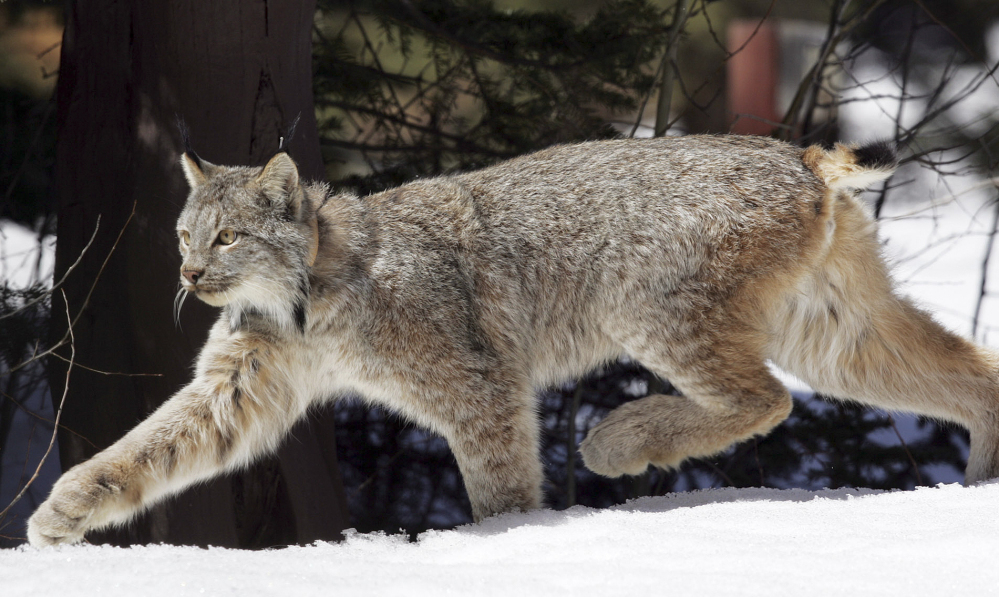MONTPELIER, Vt. – Although rarely seen, the Canada lynx appears to be increasing in number in Vermont’s Northeast Kingdom, an encouraging sign for a species the state considers endangered.
Refuge Manager Mark Maghini of the Nulhegan Basin wildlife refuge says as many as six or more of the snow-loving cats may live in the area.
The 20-inch tall animal is known for its large feet, which act as snowshoes.
In the last century, the elusive animals were pushed out of the state – and many other parts of the country – largely because of the destruction of their forest habitat.
“It’s really kind of cool to see a formerly extirpated species start to reappear, and I think even more so to have a species on a national wildlife refuge,” Maghini said.
The basin lies within the Silvio O. Conte National Fish and Wildlife Refuge.
“You have a nice mix of protected federal lands, and those lands happen to provide habitat for a federally listed species,” Maghini said.
The federal government lists Canada lynx as threatened under the Endangered Species Act, while Vermont gives the species the more critical designation of endangered within the state.
In winter 2012, federal and state biologists set out to survey 26,000 acres and found a female lynx with three young, confirming a breeding population, Maghini said. A lynx also walked in front of a trail camera in broad daylight last winter, giving an unimpeded view of the animal.
Just a few weeks ago, Maghini said, he saw fresh lynx tracks while opening the gate on a snowmobile trail.
The lynx’s favored prey is the snow hare, abundant in Vermont’s Northeast Kingdom, which also provides the dense forests with a conifer mix where lynx thrive, Maghini said.
For the 40th anniversary of the Endangered Species Act, the U.S. Fish and Wildlife Service highlighted the lynx found in Vermont. The federal law was passed to protect and, in some cases, restore plant and animal species across the country.
Besides the lynx, Vermont is home to several imperiled species, including the dwarf wedgemussel and the northeastern bulrush plant.
More recently, the northern long-eared bat, a species devastated by the disease called white nose syndrome, has been suggested as an addition to the list.
Send questions/comments to the editors.



Success. Please wait for the page to reload. If the page does not reload within 5 seconds, please refresh the page.
Enter your email and password to access comments.
Hi, to comment on stories you must . This profile is in addition to your subscription and website login.
Already have a commenting profile? .
Invalid username/password.
Please check your email to confirm and complete your registration.
Only subscribers are eligible to post comments. Please subscribe or login first for digital access. Here’s why.
Use the form below to reset your password. When you've submitted your account email, we will send an email with a reset code.